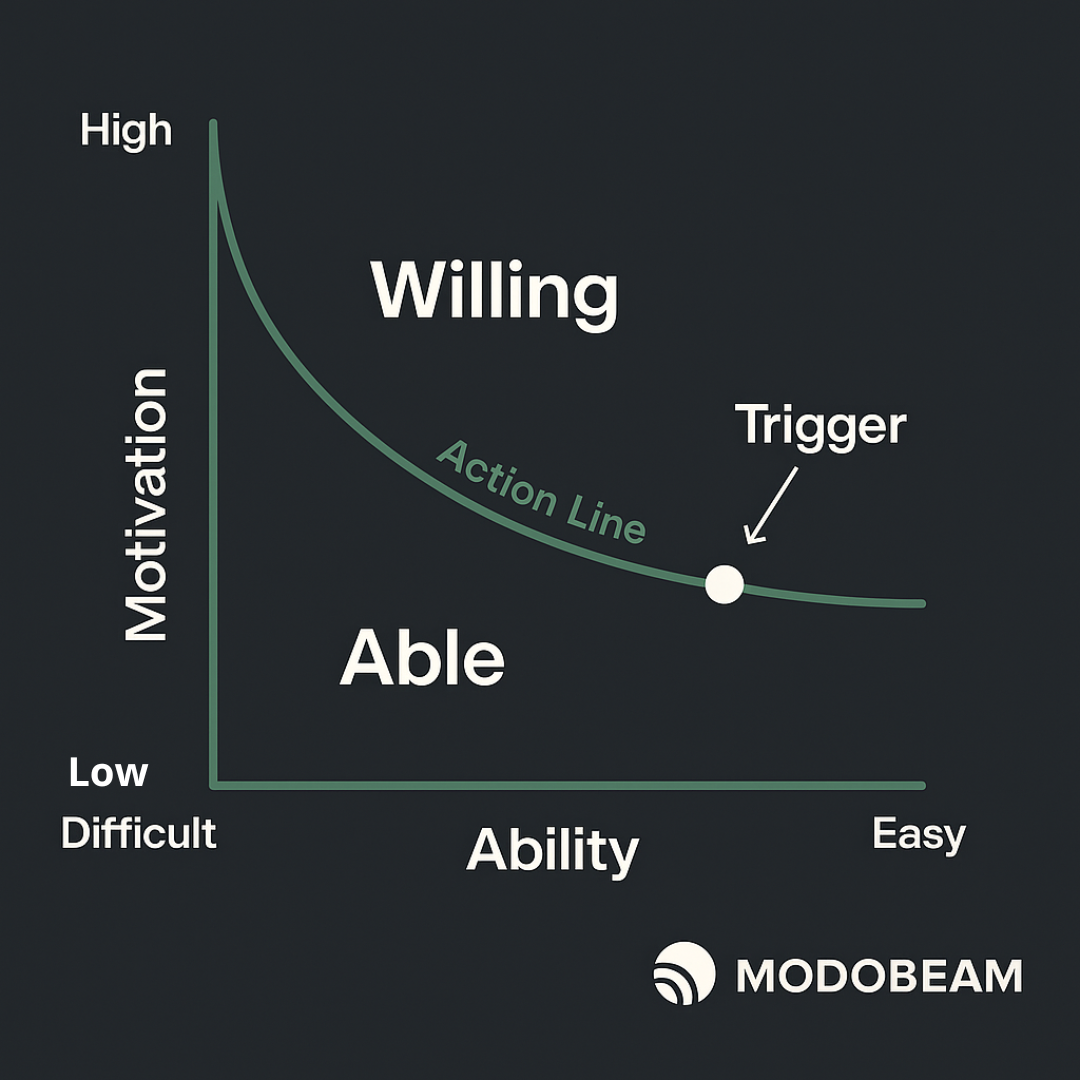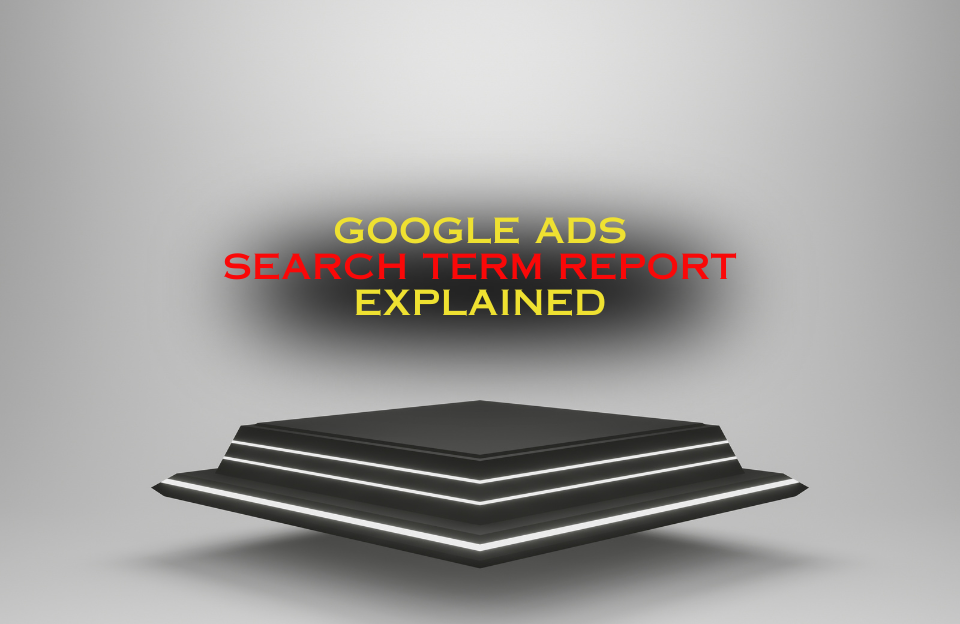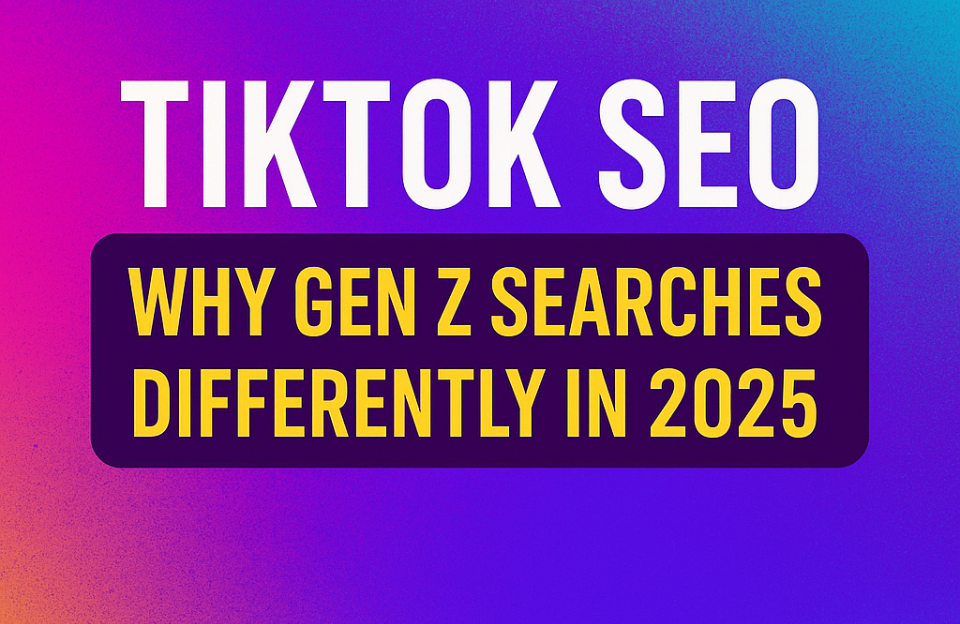The Formula: B = MAP
At the heart of the model is the formula:
Behavior = Motivation × Ability × PromptThis means that for any behavior to occur, three elements must align at the same moment:
- Motivation — The internal desire or need to perform the behavior
- Ability — The ease with which the behavior can be performed
- Prompt — A cue or trigger that nudges the user to act now
If one of these components is missing, the behavior won’t happen. For instance, a user might be highly motivated and receive a prompt, but if the task is too difficult (low ability), they’ll likely abandon the action.
Understanding the Behavior Curve
Fogg’s model is often visualized as a graph. The vertical axis represents Motivation (low to high), while the horizontal axis maps Ability (hard to easy). A curved “action line” separates successful prompts (above the curve) from failed ones (below).
Real-World Example: PayPal Checkout
Let’s apply B=MAP to a checkout scenario:
- Motivation: The user wants a secure and fast way to pay.
- Ability: PayPal simplifies the process to just a few clicks.
- Prompt: The “Pay with PayPal” button appears clearly at checkout.
Because all three elements are present, the desired behavior — completing the purchase — is likely to occur.
Deeper Application: Neuromarketing & Behavioral Design
From a neuromarketing perspective, the Fogg Behavior Model bridges cognitive psychology with digital strategy. It resonates with Daniel Kahneman’s dual-system thinking, where System 1 (fast, intuitive) responses are often triggered through emotional motivation and simple prompts. Meanwhile, System 2 (slow, rational) decisions may require higher ability or more deliberate action.
For example, neuromarketing tactics like urgency (“Only 2 left!”) increase motivation. A frictionless UX reduces effort (higher ability). Pop-ups, CTAs, or notification sounds act as prompts — often activating behaviors subconsciously.
Why One Factor Alone Isn’t Enough
Designers often focus too heavily on one factor, like flashy CTAs (prompts) or sleek UX (ability), without balancing the full equation. But:
- High motivation without ability leads to frustration
- High ability without motivation leads to indifference
- Without prompts, no behavior occurs — even if users are both willing and able
Understanding this synergy is essential for designing digital experiences that actually drive action.
Strategies for Implementation
1. Increase Motivation
- Use emotional copywriting
- Add urgency or scarcity (limited-time offers)
- Connect to values or aspirations (e.g., eco-friendly, status)
2. Enhance Ability
- Simplify forms and processes
- Use progressive disclosure (show only necessary info)
- Make interactions mobile-first and intuitive
3. Optimize Prompts
- Well-timed push notifications
- Sticky CTAs that appear at key moments
- Microcopy like “Try free for 30 days” or “See it in action”
Case Example: Duolingo
Duolingo, the language-learning app, is a textbook example of B=MAP in practice:
- Motivation: Gamification creates desire through streaks, XP, and rewards.
- Ability: Lessons are bite-sized and easy to complete.
- Prompt: Daily reminders prompt users at optimal times to continue learning.
This model doesn’t just apply to apps — it can be used in emails, e-commerce, landing pages, onboarding flows, and even offline service design.
Limitations of the Model
While the Fogg Model is powerful, it’s important to recognize its boundaries. Human behavior is also influenced by context, culture, habits, and social dynamics. The model simplifies complex behaviors into a triadic equation — which is useful, but not exhaustive.
Also, not all behaviors should be engineered. Ethical design practices should always consider long-term impact and user well-being. This is especially relevant in neuromarketing and behavioral targeting.
Conclusion: Why It Matters
The Fogg Behavior Model is a cornerstone for anyone working in UX, product design, CRO, or neuromarketing. By ensuring that motivation, ability, and prompt align at the right moment, you can guide users toward meaningful action — without manipulation or friction.
Want to dive deeper into consumer psychology? Explore related models like System 1 and 2 Thinking and The Limbic Map to build a complete toolkit for behavioral design.





